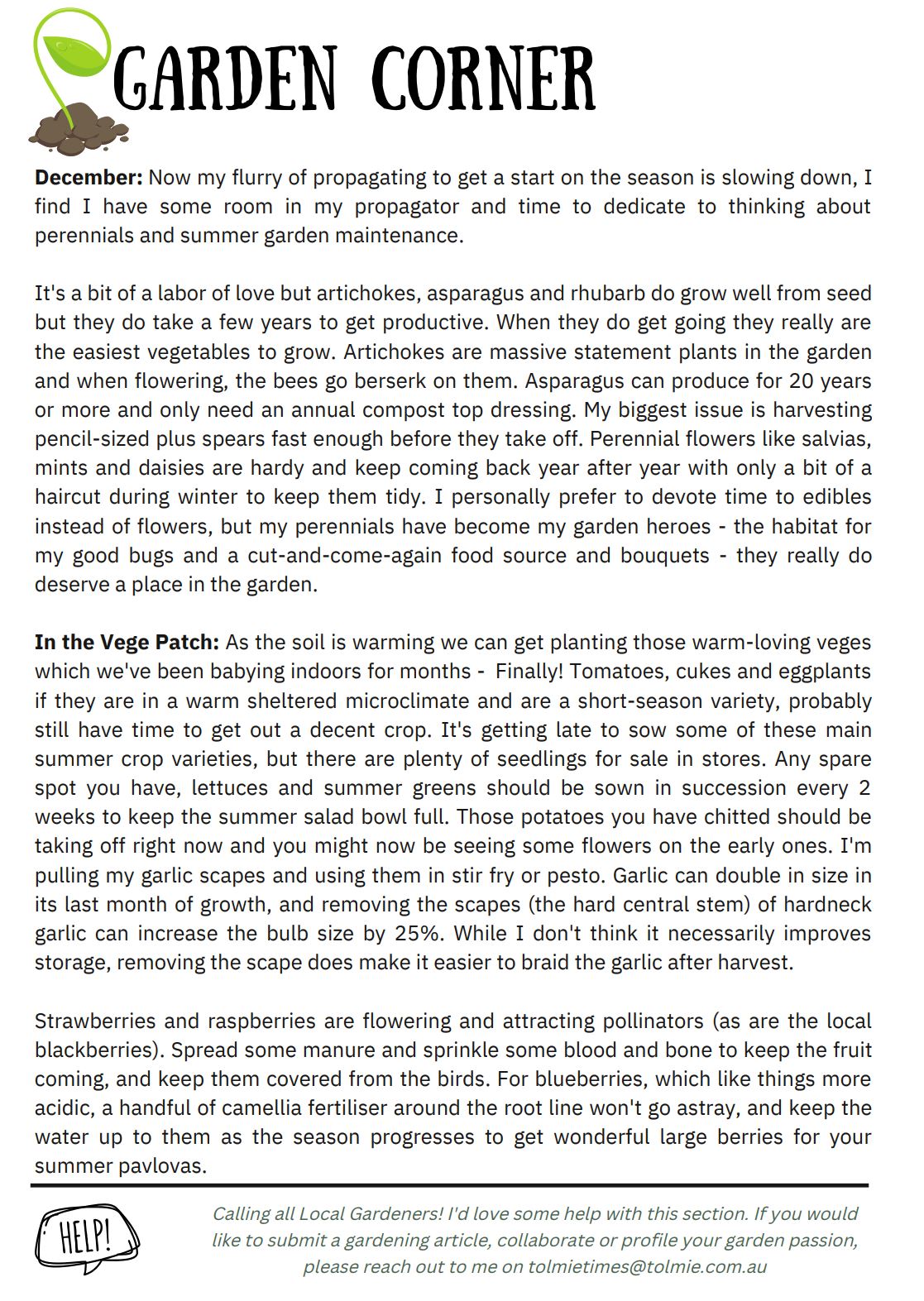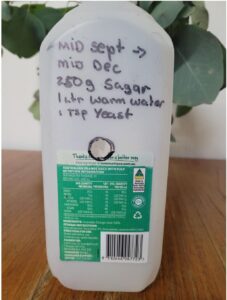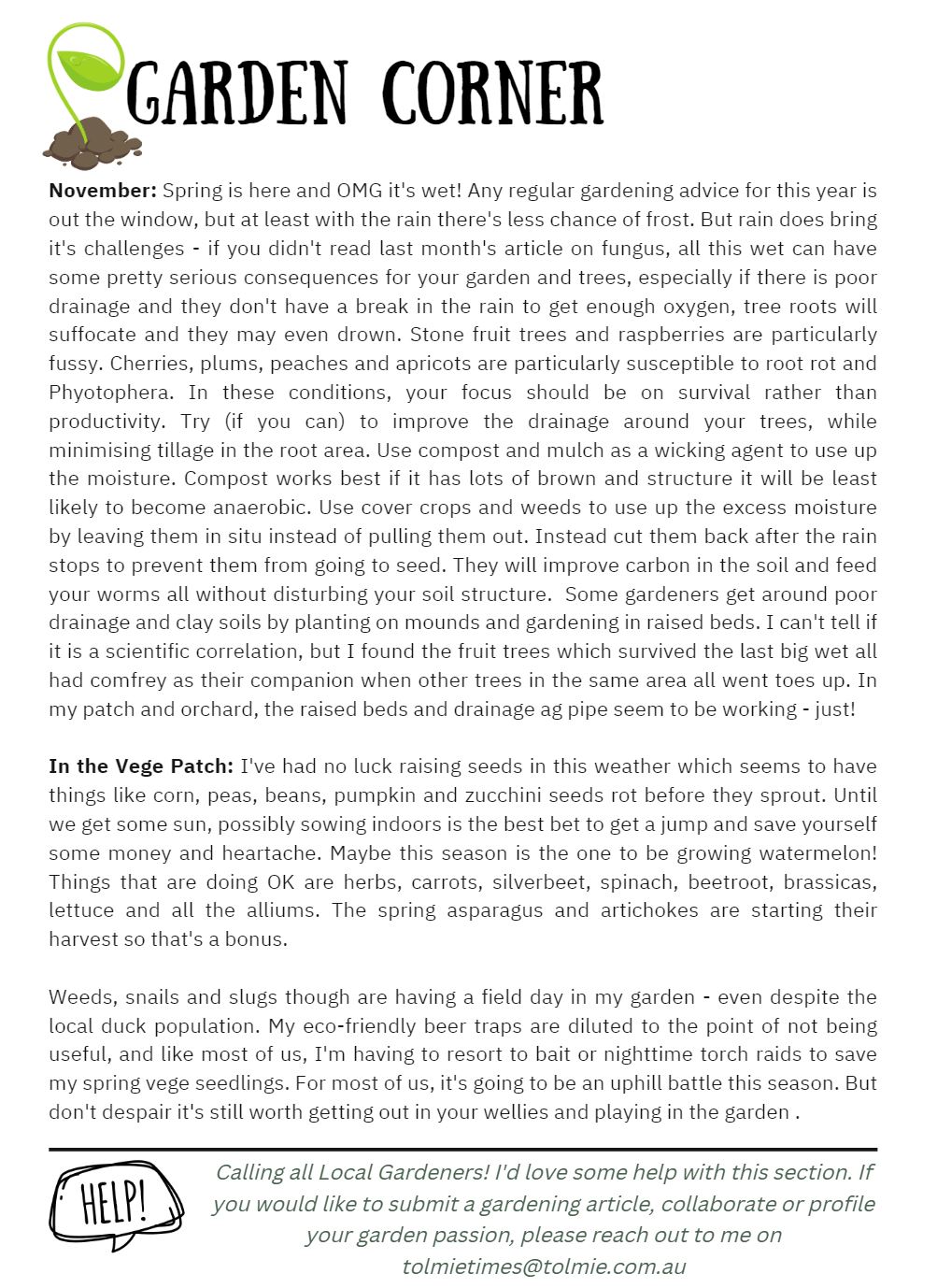

European Queen Wasp Trap DIY Recipe
Spring is here and most of us are looking forward to spending some more time outside, but while we’re all enjoying being out in the open air no one will enjoy being stung by a honey bee or European wasp. Unfortunately, European wasps are often mistaken for bees. Bees are usually more interested in the pollen or nectar on flowers than people, but European wasps however much more aggressive, they are attracted to food and drink, do not die when they sting and can sting repeatedly. While it is quite easy to step on a bee and be stung when walking around barefoot, wasps are considered more dangerous because even a single individual can be provoked into attacking humans and will ruthlessly defend their nest or their prey. While the wasps and bees have similar colouring, being both yellow and black, there are many physical differences between the two. Bees are fuzzy and stockier while wasps are longer and thinner and fuzz free. Bee legs are black while the wasp’s legs are yellow. Wasp antennae are also longer and thicker than the common honey bee. Nicknamed the “killer wasp”, It is best not to swat at a passing European wasp as you do not want to anger it.
But there is good news! Catching queens is the best and most environmentally sound method of reducing European wasps. Catching one Queen in Spring as she comes out of hybrnation looking for food means you reduce a colony of 100,000 or more wasps ruining your BBQ in Summer! This spring wasp trap recipe is for springtime and early summer only and is dedicated to catching queen European wasps only and shouldn’t kill your local bees.
SPRING QUEEN WASP TRAP:
Made from a clear 1.25L PET bottle (soft drink bottle, Milk, Orange juice or any similar container) with a lid. Make a hole 13 -20 mm diameter about 10cm – 12 cm (100mm – 120mm) from the base of the bottle on each of 3 sides of the bottle opposite the handle. The hole diameter is not millimetre critical but does need to be large enough for the queen wasp to enter and small enough so she cannot easily find her way out. you can drill or just cut an X in the bottle and push the flaps in. The number of holes is to maximise the entry points and leaving a side free allows you to empty the trap and refill without getting dead wasp juice all over you!
BAIT:
• Dissolve 250g sugar in 1 litre ml warm water.
• Stir until dissolved. Cool until body temp.
• add 1 tsp yeast.
• You should end up with around 1.3 litres of mixture
Some people like to add a tablespoon or two of honey or some blended apple fruit scraps per trap.
The above recipe makes enough for (about) 2 traps. Allow 12 days for the mix to ferment. Time to ferment depends on ambient air temperature.
Optional: add a drop of dishsoap to break the surface tension and make it even easier for the wasps to drown.

How can I tell if the mix is fermenting?
When the mix is fermenting it will bubble and foam slightly and have a yeasty smell. Sometimes it’s not obvious until you shake the container a little. You may notice bubbles clinging to the inside of
the container If you have the above sugar content correct it should begin to ferment withing an hour. Place the bait mixture in a warm place for 1-2 days for the solution to ferment (fermenting will stop
bees being attracted) If fermenting seems slow add another teaspoon of yeast or keep warm. Old yeast will not ferment as easily. Check the use by date. Fermentation is important so that bees don’t take the bait. The CO2 released by fermentation may also have a role to play in attracting wasps.
TIME OF YEAR:
Because hibernation is dependant on daily temperatures it is difficult to advise on best time however mid-September and October seem to be the best in NE Vic. Temperatures appear to need to be above 15 C with a few days at 20C or more. Timing is not enormously critical as queen wasps forage for a considerable period after establishing a nest but it is best to have traps out as early as possible.
LOCATION:
Hang in a sunny spot in garden. Near a wood heap or pile of sticks is also good as queens hibernate under bark. Hang the trap anywhere fruit trees or where wasps are likely to forage. Height is not critical but 1 – 2 meters in the air seems good. Whilst there is nothing to harm people, pets or the environment in the bait, traps should be hung out of the reach of children and pets simply to avoid interference. Shake every few days to let bait dribble out. Keep in place until (December). Strain out when full, reuse and top up bait with water if necessary. Replace or top up bait every few weeks. The mixture does tend to evaporate so keep an eye on it. Folk are having success with older bait but there could be many reasons for this apart from the age of the bait. Feel free to experiment.
HOW MANY TRAPS?
2 – 4 traps for the average house block. Larger areas should consider 4 traps per Ha or 100 meters
apart on boundary lines.
CATCHING OTHER INSECTS
Honeybees are not attracted because of the carbon dioxide released by the fermenting yeast however we encourage users to monitor for by-catch and remove traps if you are concerned about what has been caught.
Monitor your traps for by-catch daily at first. Then check weekly. If you are catching something you are concerned about withdraw the trap and reassess. You may simply need to wait a day or two more for the bait to ferment or add another teaspoon of yeast. It should be noted that catching one or two bees or native wasps, while not ideal, is not the end of the world. European wasps kill many bees, paper wasps, and other beneficial pollinators each day so the loss of one or two bees is not really an issue.
ANTS
If you get ants in your trap you will need to start over. Wasps will not go anywhere near anything contaminated by ants. Wash the trap out thoroughly with hot soapy water and rinse well before rebaiting. You can try spraying the branch your trap hangs from and the string you hang the trap with fly spray/surface spray/wasp spray. Make sure you spray BEFORE you hang the trap so that insect spray does not contaminate traps. Spraying the branch does not seem to deter the wasps from visiting traps. Another method is to stand the trap in a pot plant saucer or bucket with a little water in it. Check the bucket/saucer occasionally and top up the water as required.
Notes:
Don’t be concerned if you don’t catch anything immediately. It may take some time to catch queen wasps. Check traps weekly and top up if required. Some people complain because they didn’t catch anything. It probably means there were no queen wasps within foraging distance: On the other hand, many people tell me they catch 20 or 30 queens in one trap a month or more after placing the trap out. A real difference can be made by working together with neighbours and community groups to cover larger areas such as river banks, parks, and vacant land.
Source: Keith Padbury (Mansfield and Delatitie bee group MADbeegroup@gmail.com)

Garden Corner – October 22
October: This year like last, is predicted by BOM to be another wet spring and that spells fungal diseases. Brown rot and black spot thrive in humid weather. Long wet spells perfectly suit the development of the fungus. Guaranteed your roses will be facing a spring of black spot. Fungal issues (Septoria, early blight) is also a risk on vegetables too. Good airflow and a regular organic spray regime will help stop the spread of fungal diseases. So pruning, removing laterals and lower leaves and not blocking all the breezes can make a difference. Some DIY Fungal recipes below.
Frosts are the limiting factor for a variety of veg in Sept. Lettuce can handle a light frost but a hard frost will set them back. Silverbeet and Brassicas (inc Kale) best delayed and sown mid-October on as cold nights (and frost) can tell them to bolt and go to flower. Old bed sheets or even old milk bottles are handy to throw over on forecast frosty nights or simply wait to plant till it gets warmer. It depends on how much food you want to grow.
In every nursery, you’ll now start seeing tomato plants for sale. Even if you don’t have a greenhouse, getting some seeds started inside or in a mini-milk bottle greenhouse can save you $. Use the 8 week rule between sowing and planting and time your planting to your average last frost. Tolmie is really a marginal climate and short season for tomatoes and though folks down the hill can get planting outside “after Melbourne cup” – up here it’s more like end of November. Cold soil is what will really set your tomatoes back, and can even completely ruin your chances of getting tomatoes that season. A tip when picking your tomato seedlings to purchase is to look for ones that have dark green leaves and have a purple colour at the base of the stem. This shows they are more hardened to our climate and have not lived in a hot controlled environment their whole life. Use black plastic/weed cloth or crusher dust mulch to warm the soil for at least 2 weeks before planting. And make sure you have them protected on cool clear nights. But don’t be scared to bring them in at night or continue to pot up your tomatoes until the soil is at least 20 degrees, and then plant them deep, and they’ll get off to a good start and reward you with Tomatoes as summer gets going.
In Tolmie, like in Tassie, selecting cool climate varieties of veg as the bulk of your plantings will boost your success. Dave’s Seed from Tasmania has a great variety of open-pollinated, heritage and hybrid seeds and lots of cool climate tomatoes and veg seeds that he has trialed himself. He has blogged his results and shares his tips for growing Tomatoes (and other veg) in a short cool climate season. Mention Tolmie Times for a packet of free seed with your order in October. https://www.davesseed.com
DYI Fungicide
Please note: Most fungicides and insecticides, even if organic, are toxic to bees. I’m a beekeeper and I spray late afternoon as sun sets to minimise any impact to bee activity
Roses & Tomatoes: Add 3 tablespoons baking soda and 3 tablespoons sunflower oil to and a 1/4teaspoon of dishsoap to 4 liters of water. Mix the ingredients well and then transfer them to a spray bottle. Spray the leaves of your roses liberally with the mixture, remembering to spray the underside of the leaves as well. The plant should be dripping wet when you’re done. This concoction works well when applied weekly to plants as a fungal prevention. It also cures some fungal diseases, including Black spot and Powdery mildew. For continued protection, spray your plant with this mixture about once a week.
Garden Corner – September 22
September: Spring is in the air despite the cold and wet. The ground is getting warmer and the trees are starting to wake up from their slumber. The advice columns say that you can start planting potatoes but beware. If I plant spuds now, they usually sulk for a couple of weeks, before emerging from the soil on those delightful clear warm days, that spell frost at night. And if I am too lazy to cover them, they will get hit and it really sets them back for the season. Chitted potatoes, on the other hand, do some of their growing inside, protected from the frost so when they get into the ground they take off like greyhounds. Chitted (sprouted) spuds usually have lots of side shoots that can be ready for harvest at least a couple of weeks before un-chtitted spuds, which is an important consideration for an impatient spud lover such as myself. Growing your own spuds means no sprout inhibiting chemicals, but fresh grown spuds are their own taste sensation you can’t replicate from the store. Steamed new spring spuds with some premium olive oil and a sprinkle of salt, pepper, and fresh rosemary – divine! Up here in Tolmie, they are so easy to grow so give it a go! Best to use virus-free seed potatoes, but you can also grow your own from the sprouts in your pantry.
Have a good look at your available garden space and make a plan based on what you like to eat and how much of it you can grow. Stick with the tougher plants at this time of year. Peas, silverbeet, spinach, lettuce, onions, leeks and parsnips can all be planted now. Check tools and watering systems as the UV up here can take a toll. It’s might seem odd to say after all this rain, but get that sorted before you need them. Take note of any drainage issues you have and make a plan to resolve when it dries out. Keep weeding because those unwanted plants will be feeling the impulse of spring too and germinating rapidly. You can start to see your fruit trees like peaches and apricots start to bud, if you haven’t sprayed trees and roses for leaf curl and black spot yet, it would be good to get in there on the next fine day because once those buds burst you’ve missed your window.

